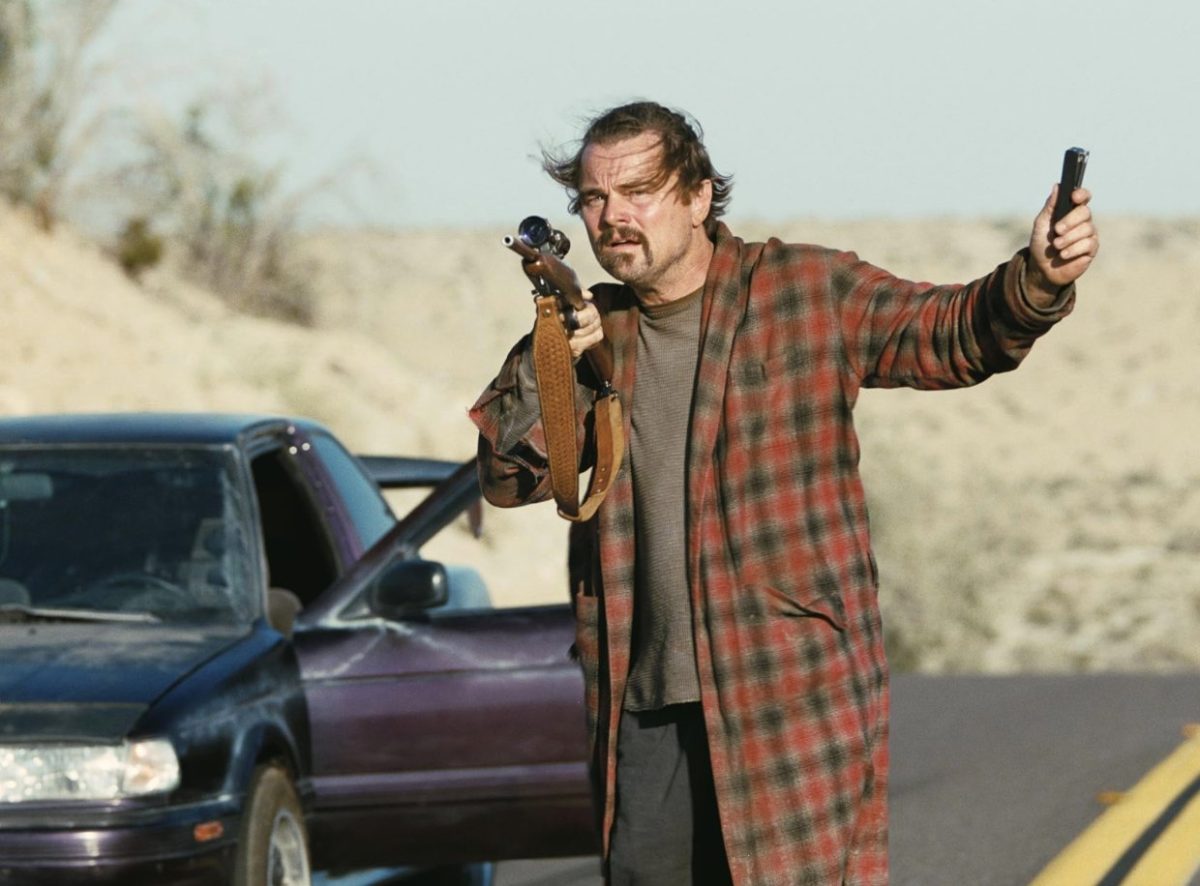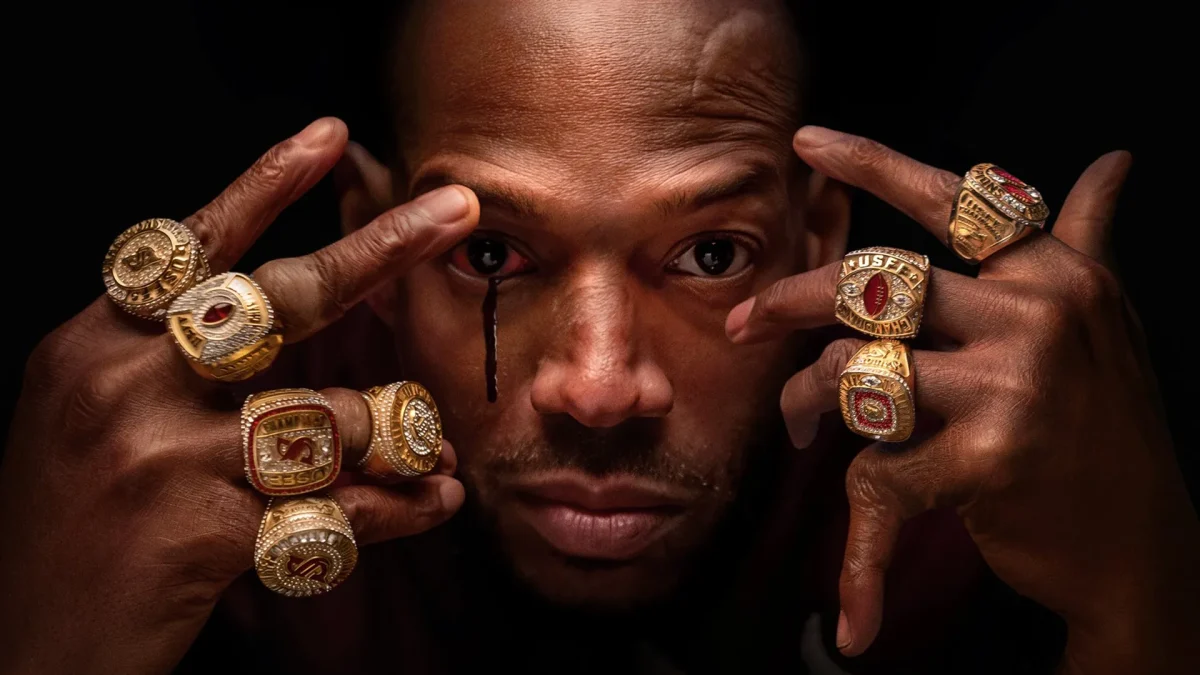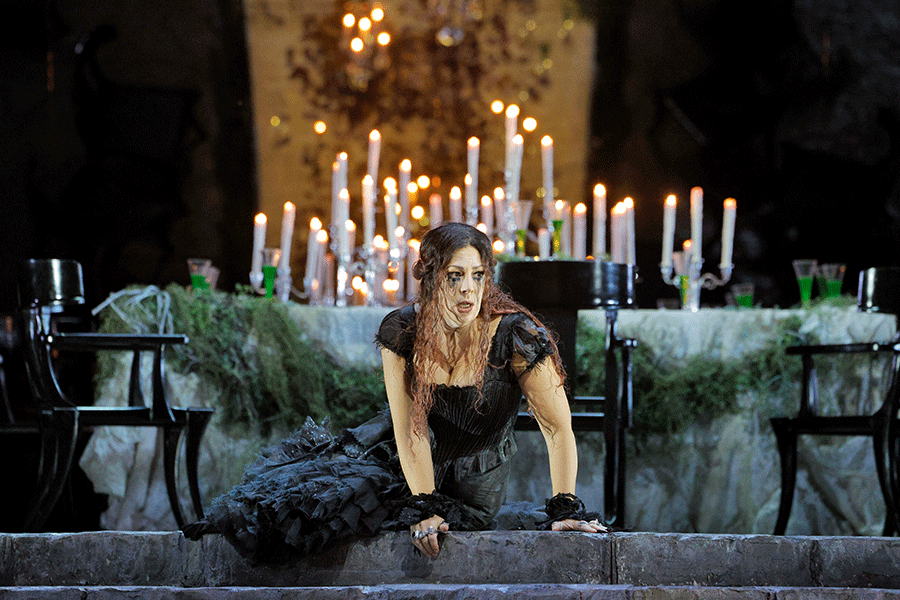
Reed: So, we watched that new Christmas action movie, Silent Night…
Griffin: Reluctantly, because it’s a mess.
Reed: What?! It’s an innovative, action-packed thrillfest!
Griffin: It’s full of illogical elements and frankly racist undertones!
Reed: Well, it–oh, wait, right, the summary.
Silent Night is an action film about ordinary, suburban family man Brian Godloc (Joel Kinnamon). He lives happily with his wife Saya (Catalina Sandino Moreno) and their son–happily, that is, until one day, roughly at Christmas, when a stray bullet from a gang shootout takes the boy’s life.
Griffin: When Brian chases after the gangsters responsible, he winds up being shot in the throat and left for dead. He survives, but there’s a cost: as we learn through gory close-ups, the surgery needed to remove the bullet leaves Brian permanently unable to speak.
Reed: Initially thrown into depression, Brian eventually chooses to move forward, using the action genre’s favorite coping mechanism: murder! Teaching himself combat and marksmanship, and remodeling an old car into a sleek, swift vehicle of vengeance, Brian prepares for Christmas Eve, when he sets out to kill everyone from the gang that destroyed his life.
Griffin: Except…at least initially, he doesn’t. Herein lies my first bone to pick: this movie is so illogical. To begin with, in spite of literally scribbling “KILL THEM ALL” on his calendar for December 24, Brian’s first move isn’t to take someone out–it’s to kidnap one of the gang members, tie him up in his garage, and try and force him to sign a confession.
Reed: Well, how is that strictly a problem? I mean, it’s interesting that Brian takes that finished confession to police Detective Vassel (Kid Cudi). He’s a vigilante, but here, he still places some faith in the law, and I welcome that nuance.
Griffin: But why that particular detective? Sure, Vassel–a member of the local Gang Enforcement Division–is one of Brian’s visitors in the hospital, but the only contact the two of them have is a very pointed look while Brian’s getting in an elevator. Admittedly, that scene is fantastic, but it’s not enough to set up the camaraderie that forms between the two. And the plot holes only multiply from there. The action ramps up when Brian visits a rival gang’s hideout–but how’d he find it? A car chase scene gets interesting when a gang member shows up on a motorcycle–except, where’d he come from? Silent Night isn’t interested in answering these questions, only in letting people hear the gunshots.
Reed: …Okay, sure, but the movie itself is a work of art! Not only does Brian not speak, but the movie as a whole takes it light on the dialogue. Director John Woo lets other sounds tell the story instead–the explosions of gunshots, the screeching of car tires. These are supplemented by a powerful soundtrack that makes scenes like the opening–where Brian runs toward the gangsters, panting, a bell around his neck jangling, with a gentle Christmas carol laid over–far more compelling.
Imagery, too, moves the story forward. Cleverly, the audience sees texts from Saya to Brian, a way to see them communicating without Brian actually speaking. I particularly love the image of a Newton’s cradle that Brian starts–the momentum of the first bead moving through all the others to snap them back and forth indicates that something powerful and uncontrollable has begun.
Griffin: Well, even if you can get past the plot details that are simply illogical, you then run up against ones that are actually problematic. Almost every single gang member that Brian kills is Latinx or Hispanic, despite this hardly being the case in reality: in fact, in 2018, The Guardian reported that 40% of US gang members were white. Nevertheless, Hispanic and Latinx people are the main victims of this unhinged white man’s massacre.
Brian’s first actual victim is a Latinx crook, and–spoiler alert–he doesn’t make it quick: he rams into him with his car, knocks him onto the car roof, spins him around while the guy squeals loudly and repeatedly, and then shoots him before the crook can shoot Brian. Later, he again uses his car as a battering ram–this time on three people who aren’t actually committing a crime: they’re just putting something in a truck.
All of this seems to add up to a very dangerous picture. Hispanic and Latinx people in this film are not real, human characters, but mere gangsters whose death is a spectacle. (Meanwhile, aside from Saya and the mom of a random kid who Brian mistakes for his dead son, the female-presenting characters in this film are either strung out on drugs or, in the case of one of them, on a psychopathic rampage.)
Reed: Hmmm…I had noticed that. This reminds me of our review of The Creator–an epic action film that doesn’t pay enough attention to its writing or character development, and severely disrespects a marginalized group. Only, I guess, this time there aren’t as many robots.
Griffin: Oh, shoot, it’s already time for the sum-up–which, this time, is brought to you by Kat, Niles North junior, with whom we saw the movie.
Reed: “If you’re looking for a movie…just to see people get killed, then this is a really good movie,” Kat said. “The shots are gorgeous. The artistic direction is on point. But if you’re looking to have a good story, this probably isn’t the movie for you.”
Griffin: Silent Night–it seems that this year, if you want a Christmas action movie, you’re better off watching Die Hard.
Reed: But Griff, Die Hard isn’t a Christmas–
Griffin: I am not having this discussion right now!









